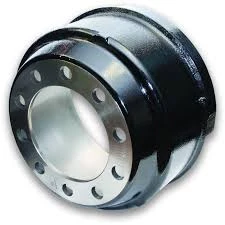
-
 Afrikaans
Afrikaans -
 Albanian
Albanian -
 Amharic
Amharic -
 Arabic
Arabic -
 Armenian
Armenian -
 Azerbaijani
Azerbaijani -
 Basque
Basque -
 Belarusian
Belarusian -
 Bengali
Bengali -
 Bosnian
Bosnian -
 Bulgarian
Bulgarian -
 Catalan
Catalan -
 Cebuano
Cebuano -
 Corsican
Corsican -
 Croatian
Croatian -
 Czech
Czech -
 Danish
Danish -
 Dutch
Dutch -
 English
English -
 Esperanto
Esperanto -
 Estonian
Estonian -
 Finnish
Finnish -
 French
French -
 Frisian
Frisian -
 Galician
Galician -
 Georgian
Georgian -
 German
German -
 Greek
Greek -
 Gujarati
Gujarati -
 Haitian Creole
Haitian Creole -
 hausa
hausa -
 hawaiian
hawaiian -
 Hebrew
Hebrew -
 Hindi
Hindi -
 Miao
Miao -
 Hungarian
Hungarian -
 Icelandic
Icelandic -
 igbo
igbo -
 Indonesian
Indonesian -
 irish
irish -
 Italian
Italian -
 Japanese
Japanese -
 Javanese
Javanese -
 Kannada
Kannada -
 kazakh
kazakh -
 Khmer
Khmer -
 Rwandese
Rwandese -
 Korean
Korean -
 Kurdish
Kurdish -
 Kyrgyz
Kyrgyz -
 Lao
Lao -
 Latin
Latin -
 Latvian
Latvian -
 Lithuanian
Lithuanian -
 Luxembourgish
Luxembourgish -
 Macedonian
Macedonian -
 Malgashi
Malgashi -
 Malay
Malay -
 Malayalam
Malayalam -
 Maltese
Maltese -
 Maori
Maori -
 Marathi
Marathi -
 Mongolian
Mongolian -
 Myanmar
Myanmar -
 Nepali
Nepali -
 Norwegian
Norwegian -
 Norwegian
Norwegian -
 Occitan
Occitan -
 Pashto
Pashto -
 Persian
Persian -
 Polish
Polish -
 Portuguese
Portuguese -
 Punjabi
Punjabi -
 Romanian
Romanian -
 Russian
Russian -
 Samoan
Samoan -
 Scottish Gaelic
Scottish Gaelic -
 Serbian
Serbian -
 Sesotho
Sesotho -
 Shona
Shona -
 Sindhi
Sindhi -
 Sinhala
Sinhala -
 Slovak
Slovak -
 Slovenian
Slovenian -
 Somali
Somali -
 Spanish
Spanish -
 Sundanese
Sundanese -
 Swahili
Swahili -
 Swedish
Swedish -
 Tagalog
Tagalog -
 Tajik
Tajik -
 Tamil
Tamil -
 Tatar
Tatar -
 Telugu
Telugu -
 Thai
Thai -
 Turkish
Turkish -
 Turkmen
Turkmen -
 Ukrainian
Ukrainian -
 Urdu
Urdu -
 Uighur
Uighur -
 Uzbek
Uzbek -
 Vietnamese
Vietnamese -
 Welsh
Welsh -
 Bantu
Bantu -
 Yiddish
Yiddish -
 Yoruba
Yoruba -
 Zulu
Zulu
Feb . 05, 2025 04:44
Back to list
drum brake check valve
The drum brake check valve, though often overlooked, is a pivotal component in the efficient operation of drum brake systems. For automotive enthusiasts and professionals, understanding the nuances of this small but significant part can greatly enhance vehicle safety and performance.
Expert Insights and Considerations From an expert’s perspective, the quality and specification of the check valve are critical. When replacing a drum brake check valve, it's imperative to choose components that are compatible with the vehicle’s make and model. The choice should be driven by manufacturer recommendations and certified reviews to ensure reliability and safety. Moreover, understanding the material composition of the valve can influence its longevity and performance. Brass or stainless steel valves offer better durability compared to their plastic counterparts, although they may come at a higher cost. Authoritative Advancements and Innovations Recent advancements in automotive technology have introduced enhanced designs for check valves. Some innovations focus on improving fluid dynamics and minimizing resistance within the valve, which results in a more responsive braking system. Additionally, the integration of diagnostic capabilities into modern check valves allows for early detection of potential failures, a feature not previously available in traditional designs. Building Trust in Maintenance and Replacement Trustworthiness in brake system maintenance cannot be overstated. It is essential for vehicle owners and mechanics alike to follow a regular maintenance schedule, incorporating check valve inspections as part of routine brake servicing. Establishing a relationship with reputable suppliers and manufacturers can ensure access to authentic and high-quality replacement parts. In summary, although the drum brake check valve might appear inconspicuous, its role in maintaining brake integrity is paramount. By ensuring regular inspections, understanding the mechanism’s intricacies, and choosing high-quality components, vehicle safety can be enhanced significantly. This attention to detail not only prolongs the lifespan of the brake system but also builds a trustworthy rapport with vehicle performance and safety.


Expert Insights and Considerations From an expert’s perspective, the quality and specification of the check valve are critical. When replacing a drum brake check valve, it's imperative to choose components that are compatible with the vehicle’s make and model. The choice should be driven by manufacturer recommendations and certified reviews to ensure reliability and safety. Moreover, understanding the material composition of the valve can influence its longevity and performance. Brass or stainless steel valves offer better durability compared to their plastic counterparts, although they may come at a higher cost. Authoritative Advancements and Innovations Recent advancements in automotive technology have introduced enhanced designs for check valves. Some innovations focus on improving fluid dynamics and minimizing resistance within the valve, which results in a more responsive braking system. Additionally, the integration of diagnostic capabilities into modern check valves allows for early detection of potential failures, a feature not previously available in traditional designs. Building Trust in Maintenance and Replacement Trustworthiness in brake system maintenance cannot be overstated. It is essential for vehicle owners and mechanics alike to follow a regular maintenance schedule, incorporating check valve inspections as part of routine brake servicing. Establishing a relationship with reputable suppliers and manufacturers can ensure access to authentic and high-quality replacement parts. In summary, although the drum brake check valve might appear inconspicuous, its role in maintaining brake integrity is paramount. By ensuring regular inspections, understanding the mechanism’s intricacies, and choosing high-quality components, vehicle safety can be enhanced significantly. This attention to detail not only prolongs the lifespan of the brake system but also builds a trustworthy rapport with vehicle performance and safety.
Prev:
Next:
Latest news
-
What Are Drum BrakesNewsJul.07,2025
-
Understanding Brake Drum MaterialNewsJul.07,2025
-
Semi-Trailer Brake Drum: A Key Component for Extreme Loads and Long-Distance TransportNewsJul.07,2025
-
Drum Brake Pads for SaleNewsJul.07,2025
-
Brake Drums for SaleNewsJul.07,2025
-
Brake Drum ManufacturerNewsJul.07,2025
-
Aluminum Brake Drums: The Future of High-Performance CarsNewsJul.07,2025
